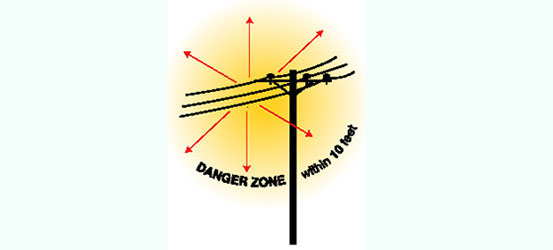A WALZ Construction crane operator brought Hanson Rd to a crawl on Friday afternoon when the boom on his crane brought down powerlines near Windscreens O’Brien.
Witnesses said they saw a shower of sparks as the 57-year-old operator was shocked while exiting the crane cabin.
Queensland Ambulance officers transported the man to Gladstone Base Hospital for observation as Ergon Energy staff repaired the damage to the lines.
Safety Tips on the Job
 Always consider all power lines as energized and dangerous. Any contact with a crane boom will probably cause serious injury to operators and workers, and damage to equipment.
Always consider all power lines as energized and dangerous. Any contact with a crane boom will probably cause serious injury to operators and workers, and damage to equipment.
Look up before you unload or load a crane from a truck or lowboy. Make sure there are no overhead lines before you start.
Educate your crew — particularly new employees — about the dangers of overhead power lines. During crane operations, the most hazardous thing a ground worker can do is touch the crane or load line.
That’s why it makes sense to add an extra margin of safety by barricading your crane’s operating area. A well-placed barricade also serves as a visual reminder of the danger zone and can minimize risk to those in the area, or those handling the load line, slings or cable (see OSHA Standard, above).
Be safe. The crane’s mast or boom must be kept at least 10 feet away from a normal distribution power line at all times — this includes the load line and the load (see OSHA Standard, above). Skilled crane operators know that distances in the air are hard to judge, and that a spotter is a good safety measure. When working near any power line, use the shortest boom possible. Never move a crane under a power line unless there are adequate clearances.

